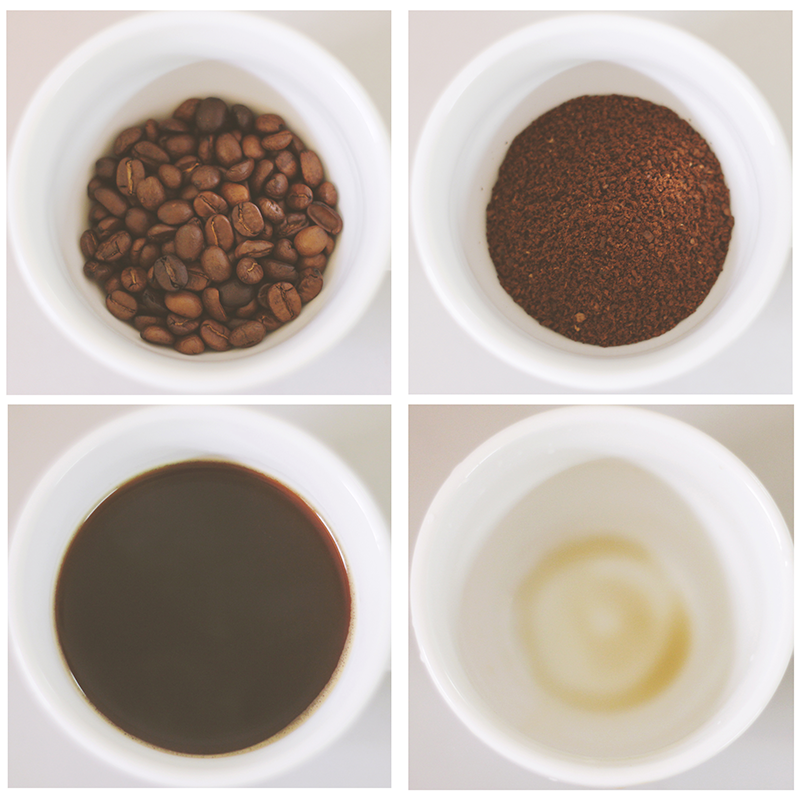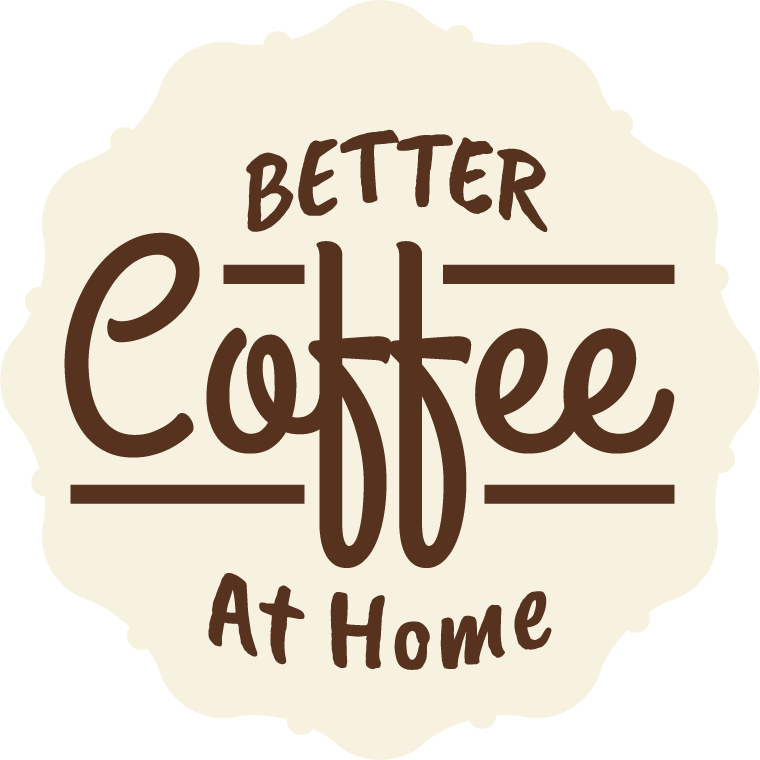Learning to taste all of the nuances that coffee has to offer will mean that you have learn to develop your coffee flavor palate.
Did you know that coffee is way more complex than wine?
There are over 1,500 aromatic and flavor compounds in coffee. Wine has only 200.( nice try wine.)
Learning to describe what you’re tasting is hard to process at first, Coffee contains so many flavors in it that you would never think about. For instance, If you asked me months ago if I could taste hints of bananas and cinnamon in my coffee I would have told you no, I just taste coffee, really good coffee but still it was hard for me to pick up on some of these things.
Some of these flavors will slip right by you at first, especially if you normally only drink gas station coffee or folgers from home.
If you start diversifying the coffee you buy, your palate will begin to develop. You will have references to compare other flavors to making it easier to pick out differences.
A quick pro tip from Tim Wendelboe; The best way to start developing your coffee flavor palate is to buy two completely different coffees if you are just starting out. And compare those two tastes.
For instance, Coffee grown in Brazil will have a much different flavor than a coffee grown in Ethiopia or say Costa Rica.
This way it will be easier to pick up on the differences between the two. The Costa Rican coffee may have more floral notes with less of a body in comparison to the Brazilian coffee.
Developing your coffee flavor palate to pick up more subtle flavors that the coffee has to offer leads you to enjoying coffee more. Well I should say enjoying great coffee more. This can be a double edged sword.
After diving into the world of specialty coffee you may find it harder and harder to drink your standard Folgers or gas station coffee.
You will definitely pick up on the plenty of Robusta that they add to their blend in order to save money. Even though you may find it tough to go back to commodity coffee I think having a refined coffee flavor palate is a great skill to develop. It just opens up the coffee world to you allowing you to have a more enjoyable experience.

Developing your Coffee Flavor Palate
There is a systematic way to developing your palate and learning to describe what you taste. This is no easy task, especially since coffee is more complex than wine.
This systematic way of tasting coffee is called cupping.
Cupping is a great way to develop your taste, It’s what professional coffee shops use to evaluate taste and differences in roasts and quality control to ensure consistent taste.
Coffee cupping allows you to really pick up on things like aroma, mouthfeel, acidity, and any other little flavor notes the coffee bean has to offer.
Be careful, as you’re doing this you may feel the need to go out and buy some non prescription glasses and maybe grow a mustache.
This may make you feel like a fancy hipster but put your judgments aside, this is a great way to pull out distinct flavors in the coffee.
If you’ve never seen anybody do an official cupping here is a quick video describing it.
Coffee beans are usually roasted to a light roast for cupping purposes, this is because if you start to roast longer you begin to add flavors to the bean. Light roasts really let the true nature of the bean shine. Depending on the coffee you buy, this could be a good or a bad thing.
To learn more about roasting and how to do it at home check this out.
The best way to get the most out of your experience is to be present in the moment, using all of your senses to evaluate the coffee. Before you even add water, smell the grounds. See if you notice any familiar scents. Smell is a great way to predict the taste of the coffee.
Note: the ratio of coffee to water for cupping is; 8.25 grams of coffee per 150 grams of water.
After you smell your freshly ground coffee add water to the cup and let steep for about four minutes.
Tip: Your grind should be somewhere between coarse and medium.
This is another great time to give your coffee a smell. You’ll notice that a lot of the grounds have floated to the top, creating a crust.
You want to break that crust with a spoon, This is one of the best times to pick up on the aromas of the coffee. This crust will hold lots of the most intense aromas the coffee has to offer.
After you break the crust give it about three stirs. It doesn’t have to be three stirs but whatever you do to one cup, you must do to the other to ensure consistency. So, if you only feel like 2 stirs that’s fine, just keep it consistent.
After you have broken the crust and stirred your coffee, you will be left with a foam on the top that holds a lot of bitter notes. It’s best to take your spoon and scoop that foam layer out to be discarded.
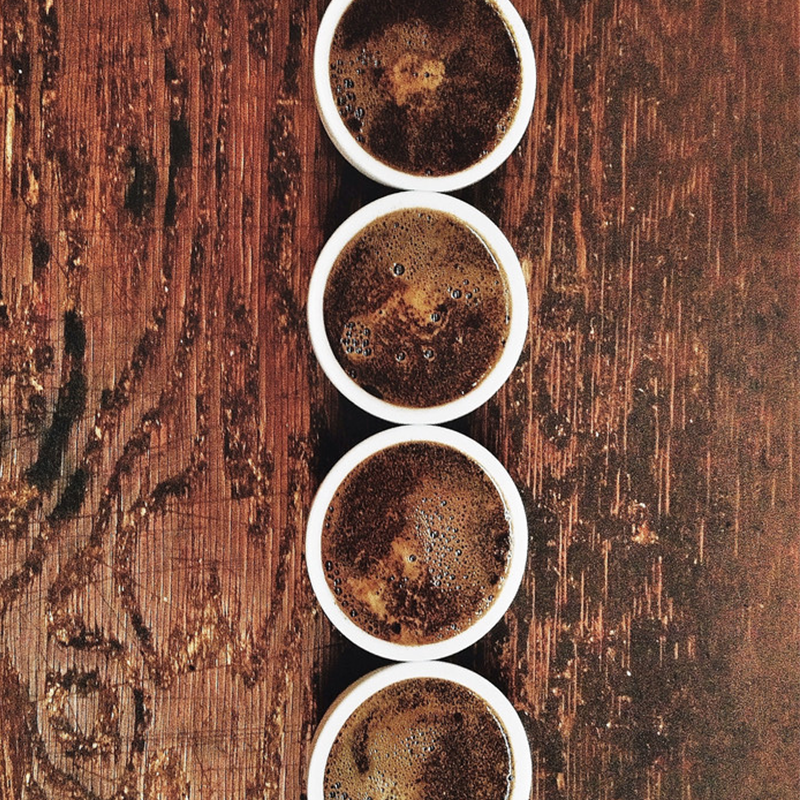
After you have removed the foam you should let your coffee sit for a few minutes until it reaches a drinkable temperature.
At this point is where I think the non prescription hipster glasses start to form on your face. You will want to get a spoon full of your coffee and give it a really good, LOUD slurp! Like you are eating soup in the rudest possible manner.
The purpose of this is to aerate the coffee, just like you would fancy wine, to help your taste buds pick up all the flavors coming through and to cover your entire palate.
Giving your coffee a good slurp not only gets all of your taste buds involved but it also pulls up the coffee’s aroma into your nose where your nasal receptors get in on the action.
A pro tip from counter culture is to come down from the top of the spoon instead of the side of the spoon. This will give you a much more powerful slurp, allowing more air to be infused with the coffee.
Move the coffee around in your mouth a bit, give it a swirl or pretend you are chewing some food. Do whatever is most comfortable to you but don’t just instantly swallow the coffee give your mouth time to enjoy all that the coffee is.
After all, our tongue isn’t the only thing with taste buds, out entire mouth is covered in them so why not get them all involved?
Lots of coffee professionals will spit their coffee out after they have done these steps. This is simply because they don’t want to over caffeinate. If you’re doing this at home I recommend just drinking it. You most likely won’t be sampling coffee like this all day long. No need for good coffee to go to waste!
Note: you don’t necessarily have to go through the whole cupping process, you can simply brew two or more coffees with your preferred brewing method. However if you choose not to follow the cupping method make sure that every time you brew with a new coffee you are doing EXACTLY what you did with the previous coffee. Consistency is key. This is why I like the cupping method, you can easily reproduce the exact same circumstances to taste coffee again and again.
As you are diving deep into your coffee’s flavor you may start to notice flavors that are somewhat familiar but you can’t quite put your finger on them. This might start to be a little frustrating at times when developing your coffee palate.
This is where it’s important to really start developing a coffee flavor vocabulary. It can be hard at first to start picking out the lemongrass or nutmeg flavors from your brew.
I recommend not worrying about specifics like that right off the bat. Start thinking more broadly to get you on the right track at first. Words like sweet or floral are ok to start describing coffee’s flavor.
As you are exposed to more and more coffees with floral notes you will begin to be able to tell the differences between the rose, jasmine and hibiscus notes you are tasting.
Something the I think will help you find your coffee flavor is to write down all of your favorite foods, I bet there are coffees that will taste like some of them. As you develop your coffee flavor palate there are coffees that will offer you flavors like: Squash, Mushrooms, Peas, Toast, peaches and bananas.
The SCA has developed a coffee flavor wheel that was modeled after the wine flavor wheel but obviously it’s more complex since coffee is more complex than wine. Counter culture adopted this wheel and made a few changes. It’s a great resource to use while you are looking for those words to describe what you are tasting.
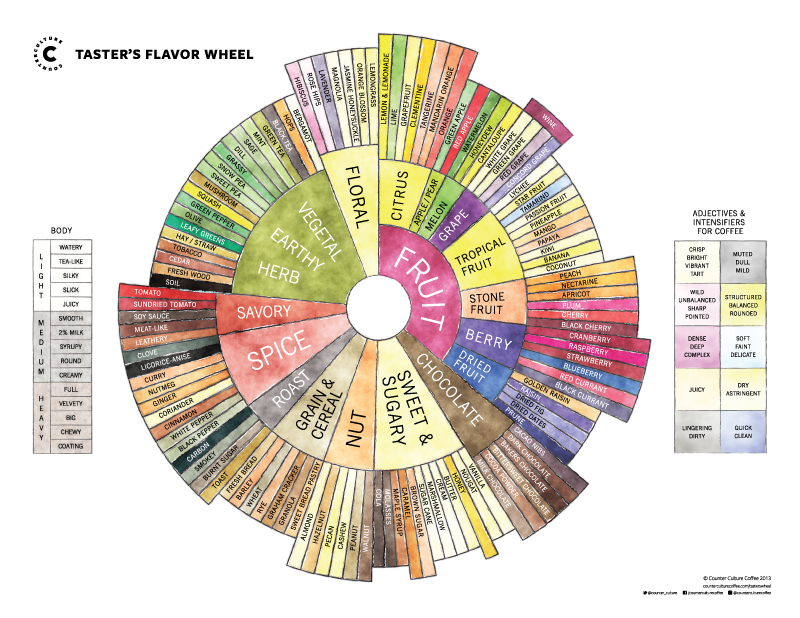
This might look pretty intimidating at first but like I said earlier, don’t worry about all of the specific flavors at once. Start focusing on the basics. Do you taste anything floral or fruity at all in this cup?
Getting a grasp of what it means to have floral or earthy tones in your coffee is a huge step in developing your coffee flavor palate.
As you would expect, coffee from a certain region will generally produce similar tastes. However, this is not always the case. Things like how to farmer has cared for the beans and environmental differences from farm to farm as well as processing techniques will change the coffee’s flavor.
Below is a quick breakdown of the flavors you can GENERALLY expect to find from each region. Again, this is not set in stone because there are a lot of environmental, Farming and processing conditions that can change the taste of your bean. However, this should give you a good starting point to help you build your coffee flavor palate and be able to detect some of these distinct flavors.
Thanks to our friends at Cafe Imports for the data we used to build this little flavor chart.
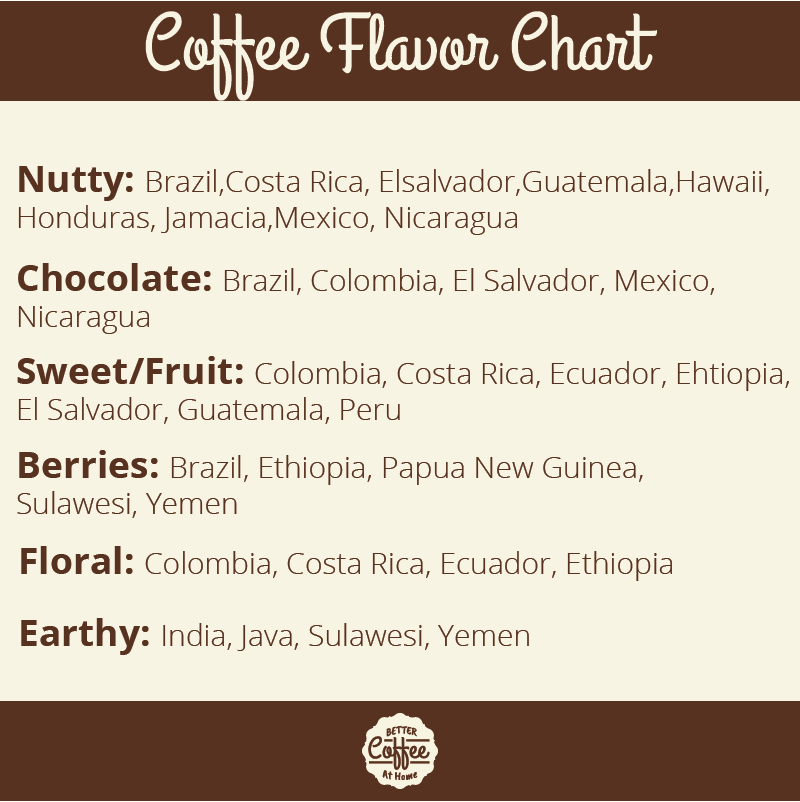
If you really want to take your coffee tasting skills to the next level, check out angel’s cup. They offer a coffee subscription that sends you “Mystery coffee”. You will receive 4 sample sized bags pf coffee that have been marked with a number. You will use this number in conjunction with their app they have developed to take make any flavor notes you pick up while drinking the coffee.
They have a very active community to go along with their blind tasting to really help you grow your skill of coffee tasting.
It’s relatively cheap, You can get four mystery samples sent to you for only $9.99. It’s a great way to try out new coffee and expand your coffee flavor vocabulary.
So, To wrap it all up I think the best way to develop your coffee flavor palate is by comparative tasting. By buying two coffees that offer two completely different flavors you will really be able to pick up on the differences a lot easier than if you were comparing two coffees from Ethiopia at the same time.
So by expanding your coffee flavor vocabulary and using the tools like the flavor wheel given to you in this article combined with being really present in the moment as you’re tasting the coffee you will over time begin to develop a really good coffee flavor palate. You will be able to distinguish between two coffees very easily.
Join in on the conversation, Let us know what your favorite coffee is and why!

